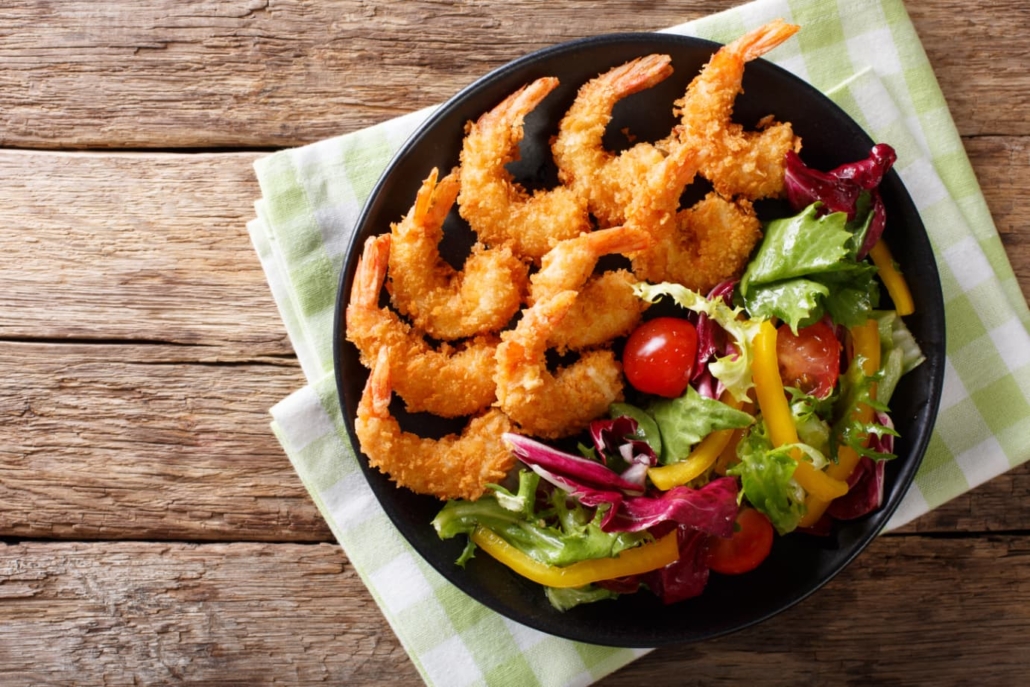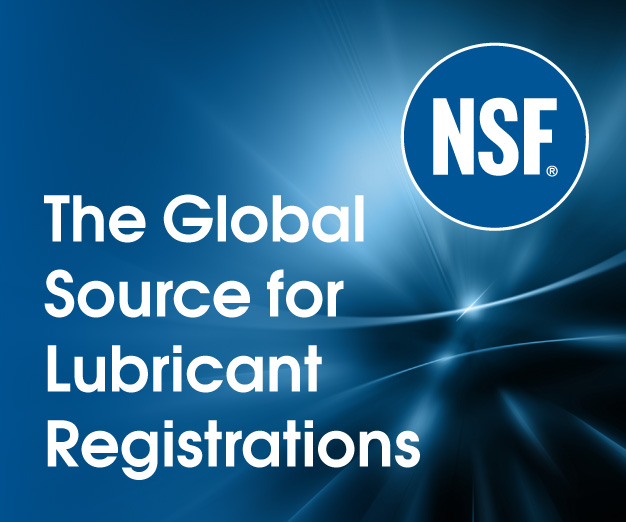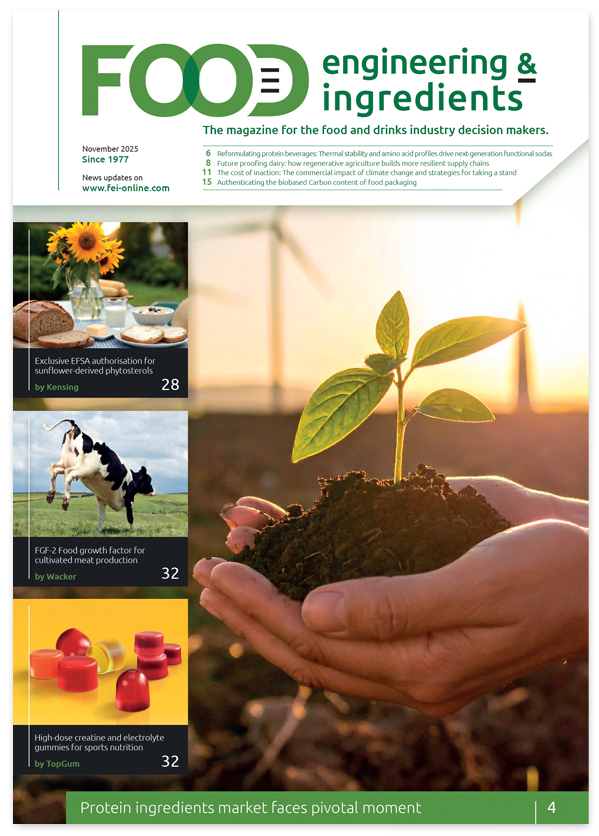Can crunchy crispy coatings carry a clean label?
How can manufacturers satisfy consumer cravings in clean label batters and breadings?

Charlotte Wymbs

Constantin Drapatz
By Charlotte Wymbs, Director of Sales, Western Europe, Ingredion
& Constantin Drapatz, Business Manager, Texture Solutions Food EMEA, Ingredion
—————-
From chicken nuggets and kievs to calamari and onion rings to tempura prawns, coated classics are constantly joined by new additions to the category like mozzarella sticks and coconut shrimp. The European batter and breadings premixes market was worth $536.9m in 2023 and is expected to grow to $733.8m by 2028 at a CAGR of 6.4%.[i]
Against this backdrop it’s fair to say that coatings can — quite literally — make or break a food product. A coating system serves multiple purposes, providing flavour, texture and visual appearance. Depending on the substrate and the desired properties, a particular system may employ different components. A pre-dust, typically wheat flour, can improve adhesion by absorbing water and also affect colour and flavour. Batters are usually composed of 80-90% flours and starches, and can also contain salt, seasonings, gums and other hydrocolloids. They can impart the desired texture and flavour acting as the coating alone or provide a sticky layer to hold breadcrumbs or a breader mix. Breader mixes blend breadcrumbs with wheat, gram or rice flour to deliver extra bite and crunchiness.
So, it can be a complex job to get coatings just right, so that they adhere to the substrate during the frying process and give a consistent finish with a perfect taste and texture. Adding to this complexity, comes the challenge posed by the ubiquitous trends for free-from and clean label variants. Today’s consumer wants it all: taste, texture and health-appeal.
This is making the development of coating systems highly complex and individual, therefore technical support from ingredient manufacturers can become the differentiating factor in addressing the multiple challenges involved.
Challenge #1: Taste and texture — it’s crunch time, or is it crisp time?
Coatings can improve appearance and colour, modify texture, prevent sogginess, retain flavour, add value, reduce fat absorption and extend the shelf life of fried foods. Taste and texture can both be significantly enhanced by the use of coating systems, and the key to the texture characteristics of coated foods is crunchiness or crispiness. In the period 2019-2023, 75% of European new product launches in batters and breadings were driven by crunchy or crispy claims.
It’s important to note the difference between the crispy and the crunchy. Crispy foods generally have thin layers which are completely rigid and shatter immediately and easily with relatively gentle pressure from the incisors, emitting high-pitched sounds as they do so. Crispy foods include potato chips, and in coatings this characteristic is best exemplified by tempura batter. Crunchy foods are typically thicker, denser and harder fracturing under repeated pressure from chewing with the molars, emitting as series of lower pitched sounds. Examples include nuts and raw carrots and where coatings are concerned, the thickly battered fish traditionally favoured by UK consumers, and the new trend for panko breadings, come to mind.
Taste, textural and visual appeal can ultimately drive consumer demand and lead to repeat purchases — but how can food manufacturers deliver a deliciously crunchy and crispy eating experience in savoury snacking, with clean label in mind? Breadings, batters and coatings add a whole new dimension to foods by adding texture, flavour and appearance — but crucially, manufacturers can benefit from making their offerings clean label as well as delicious, with 43% of consumers checking ingredient and nutrition labels.[ii]
Clean label starches, like the ones supplied by Ingredion, are key solutions that help to clean up the unhealthy image of breaded and battered foodstuffs, and to formulate products that are rich in taste and texture but without ingredients that may be perceived as additives or chemicals like hydrocolloids and modified starches.
Challenge #2: The need for nutritional credibility
It’s worth noting that while not all coatings are perceived as ‘healthy’, some are certainly regarded as healthier than others, and as such can help delivery on consumers’ nutrition demands, which may include fat reduction or protein enrichment. Today, consumers pay special attention to how they spend their money — they are looking to identify the best added-value options and are increasingly checking nutritional labels to ensure their preferences and needs are being met.[iii]
As shoppers become more selective about what they consume, items without a wellness aura, including some traditional batter and breading selections, are dropping in popularity. And, while there are some differences between regions, despite inflation, factors such as nutritional benefits are growing in both global and regional importance. The brand name is still a major influencer in product selection, too.
Challenge #3: Going gluten-free for growth
The gluten-free trend is unstoppable, spreading way beyond consumers with allergies to include an ever-growing number of people. Creating delicious, gluten-free coated food products that consumers really want is tricky. Especially when ingredients like wheat flour are essential for viscosity control, contributing to texture and delivering colour in coating systems. Removing gluten can result in formulation challenges relating specifically to the texture and eating experience of breaded and battered products.
As the demand for these types of products grows, so is the ability to create gluten-free products. This is giving those manufacturers who invest in formulating the next generation of gluten-free coating systems, first mover advantage, putting their brands in the minds of consumers in a category with potential for growth.
Challenge #4: Product consistency
The manufacturers who can rise to all the aforementioned challenges, will be able to deliver an all-round product that delivers many key attributes, including taste and texture, gluten-free (if required) and nutrition.
Getting the right combinations of ingredients is key, not only from a marketing point of view but also in keeping production costs as low as possible. This is another area where partnering with the right ingredient suppliers like Ingredion can pay dividends, as the best advice on formulation and processing can help to ensure consistent high-quality from piece to piece and batch to batch.
An open-minded approach to ingredients
In a fast-evolving food industry, clean label coating systems have become a non-negotiable aspect of meeting consumer demands. As manufacturers strive to align health-appeal and eating experience, batters and breadings can play a pivotal role, and there is an array of clean label ingredients that can play a role.
Multi-functional pulse flours — like those in Ingredion’s HOMECRAFT® Pulse range — provide a clean label, gluten-free option for improved adhesion and an egg-free, crunchy and dense texture in battered and breaded products. These pulse flours are especially useful for tempura batters. Ingredion’s NOVATION® Indulge starches and rice-based products can modify texture from crunchy to crispy with a positive holding time and are ideal for coating chicken. Tapioca and potato-based ingredients, meanwhile, are ideal for delivering a crispy texture.
With the number of options available, there are almost unlimited combinations to explore in finding the most cost-effective formulations to create coating systems to fulfil ever-evolving consumer demands. To navigate these complexities, food manufacturers can benefit from innovative ingredient solutions through collaboration with reputable suppliers, achieving the perfect crunch while delivering a clean label or formulating gluten-free alternatives.
So, keeping an open mind about clean label ingredients that can help to create new and better coating systems would seem likely to pay dividends. Because ultimately, manufacturers who are able to deliver on the taste and texture consumers demand and the clean labels they prefer, stand the best chance of gaining competitive advantage.
- For more information, visit:
https://www.ingredion.com/emea/en-uk/solving-a-challenge/challenges/clean-label-ingredients.html
References
[i] Markets and Market Data Research 2024
[ii] Ingredion, ATLAS data, 2023
[iii] Ingredion, ATLAS data, 2023




